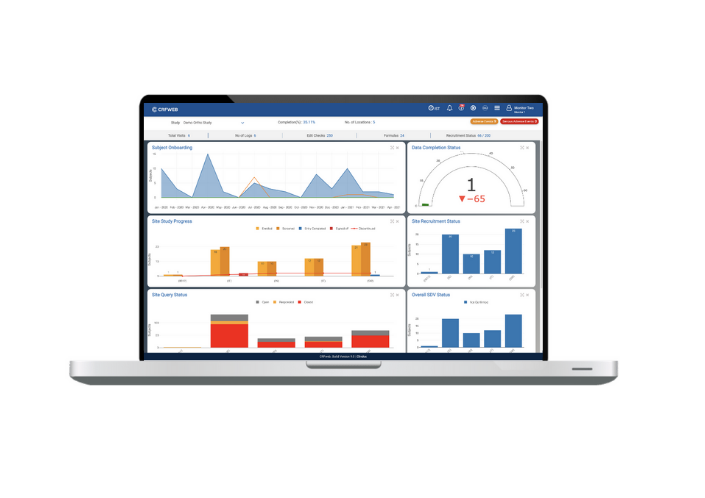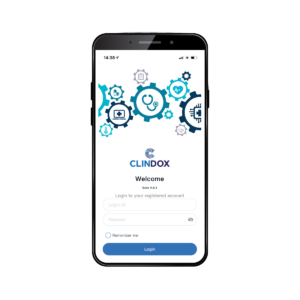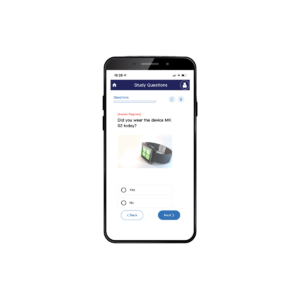ARTICLE 10: Plugging the key EDC/CTMS technology gaps – the Clinical Affairs perspective
For the tenth article of our series of articles on Managing Data and eClinical solutions for Medical Device Companies, the CRFWEB team is delighted to welcome back the Secret Clinical Affairs Director. By maintaining anonymity our highly experienced Clinical Affairs professional speaks candidly and provides some reallly fascinating insights about how EDC and CTMS vendors can best develop their systems to support the evolving needs of Med Tech companies and sponsors in the management of clinical trials.
What are the real world headaches faced by companies in the management of their clinical trials that EDC/CTMS software vendors are not really getting to grips with as yet?
Here’s the Christmas Wish list from a veteran on the front line…
Integrating Online Collaborative Project Management tools with EDC/CTMS
No-one likes admin, do they? Keeping track of things? Has This been done yet? Where are we with That? Is someone on top of The Other? No? You mean you didn’t know you had to ride shotgun on The Other? Right, OK, deep breath… We’ve all been there; we want to get on with the stuff that interests or excites us, but the paperwork needs to be done, and if it’s not done properly, well guess what? Stop right there, nothing doing until every little thing is sorted, signed, sealed and delivered.
Clinical Studies are particularly complex multi-stakeholder, multi-subject programmes of work that might last for years, often requiring close engagement with and oversight from regulatory bodies such as Ethics Committees and Competent Authorities. By their very nature, studies depend on dizzyingly detailed, precise agreements and operating procedures; this steepling tower of documentation all needs to be signed-off by key players before ANYTHING can start in earnest. There is always much haggling, nit-picking and pushing against the dead weight of institutional inertia before agreement is finally reached. Managing this process can be a nightmare and despite years of bitter, hard-won experience on the front-line, many Clinical Affairs professionals, Clinicians and CROs remain hardwired to underestimate the degree to which i-dotting and t-crossing can get in the way of just getting on with it. And delay always comes at cost – in hard cash and/or opportunity. Top-class Project Managers are completely essential to the success of a study for a whole host of reasons, not least of which is that they are extremely good at managing this mission-critical admin – a thing most of us dread! Many Clinical Affairs Directors will quietly admit to some sleepless nights worrying what they’ll do if one of their star PMs is lured away by more lucrative offers – or the simple attractions of a less stressful existence…

I don’t know…ask Albert!
Despite the ever-growing use of digital tools for studies, it remains a shameful open secret that too many of us remain too reliant on what’s being stored in the brains of too few Project Management aces. What you’d really like, is to be able to easily maintain and share at-the-click-of-a-button access to a single view of where you’re at in a study with respect to key project parameters such as:
- Number of sites with signed agreements
- Progress on open agreements – issues with Competent Authorities, Ethics Cs and NBs
- Number of subjects recruited per site
It really isn’t as it easy as it should be.
Nowadays, there are any number of EDC or CTMS platforms to choose from. A properly scoped out RFP and robust approach to interrogating responses will give you your best chance of finding a partner that works for you. I put it no more strongly than that, as this remains a somewhat opaque process and problems often only arise once you’re committed. You focus naturally on the technical needs of the study, the support you’ll get and the digital excellence of the company. Price, too, matters, but depending on the scale of your study, it might actually be a small component of the overall cost. What you probably won’t think about is how your system of choice can integrate or interface with online collaborative project management tools. My view is that if you have not already accepted that such tools are essential for studies NOW due to cost and resource scarcity, the coming impact of MDR will soon surely convince you. The need for a fully integrated QMS pretty much demands it.
We expect that online collaborative project management software will soon be a key element of our digital strategy for studies and we’d like to be able to integrate these tools with the EDC and CTMS platforms we use. In the future, then, the willingness of vendors to work with us to achieve this integration/interface with this class of software – or provide modules that do what we need them to do (using open standard formats) – will be key.

Follow the Money!
Another major (and related) issue we often face is keeping track of investigator fees and costs. Most hospitals are simply not set up to generate invoices for this type of activity and when the bill finally drops on the doormat – often many months or even years late – they can bear little relation to expected accruals in line with signed agreements. This, of course, can play havoc with budgeting and it’s not just a question of red faces explaining that an invoice for €200k actually needs to be paid for a study that finished two years ago and for which the accounts have long been signed-off. It would be a huge benefit to have an EDC or CTMS system that could automatically issue accurate invoicing information to study centres so that everyone involved has a shared real-time view of how fees and costs are accruing on a periodic basis that makes sense with respect to the study in question.
Again, ideally, you would want a CTMS or EDC system that has built-in finance modules using open standard formats, or a system that has APIs to best-of-breed accounting/bookkeeping software that could be easily configured to provide this critical functionality. So, over to you, vendors!
Plugging in to EUDAMED
In the last few weeks, it’s become predictably (and depressingly) clear that some Competent Authorities are taking a risk-averse interpretation of MDR. This has led to additional insurances being demanded in several countries for standard post market studies, which is not only very expensive in itself, it also can lead to costly and frustrating delays. Additionally, more than one country now insisting that ALL adverse events arising during the course of Post Market Surveillance must be fully and properly recorded in EUDAMED.
This makes it all the more pressing that CTMS/EDC systems’ interfaces with EUDAMED are able to provide exactly the right information required by each Competent Authority – with a minimum of manual intervention. This, I suspect, will file under “That’s easy for you to say” for most software developers, but there we are, we’ll need it – “Your mission, should you choose to accept it”.

Stocking fillers 1 – Easy Randomization
A little more niche, perhaps, than the above ideas but, nevertheless, this could save a huge amount of time and expense for certain types of study. I would like a simple phone App that integrates with the CTMS/EDC system in use that provides immediate access to randomization. The Study Nurse will not always be available to perform this task as they tend not be full time and quite often, recruitment of patients into a study sensibly needs to take place at the time of an investigation to decide what sort of treatment the patient needs. Suppose a patient IS eligible to be a study subject (for example, it’s not at all obvious, on investigation, if the patient would benefit more from a stent or a catheter balloon), ideally you would like to randomize the patient immediately so that the procedure could be carried out then and there. In a sterile environment, it can be very difficult to access the relevant systems to provide randomization. Imagine, then, if the EDC’s randomization module could be accessed via a simple App registered to the physician’s phone. The App could then be operated by a colleague in the sterile environment, such as the anaesthetist, to select the procedure to be performed. All it would need to do is ask the following questions and generate an appropriate response:
- Is this patient eligible for inclusion? (Y/N)
- Do you require randomisation? (Y/N) If yes, then:
- Patient is randomised to treatment X
Stocking fillers 2 – Integrated Wound Evaluation
Increasingly, CTMS/EDC systems allow for the storage of images, but it would be great to have the ability to integrate with software that could provide AI evaluation of those images where image assessment is intrinsic to the study. Or develop standard system modules. A good example of this – though perhaps more relevant to Pharma – is the capability to analyse the size and depth of persistent wounds such as leg ulcers. There’s some great software out there that can do this today, and to able to interface with these capabilities would offer massive efficiencies for certain types of study. However, for now, at least, this can be pretty expensive; I know of one study of 350 patients being followed for 5 years involving 50 sites, with pictures taken at 6-8 timepoints, having a quoted cost of $300-500K. This functionality seems to me to offer both a genuine competitive advantage and a real commercial opportunity for additional revenue generation.
So, that’s my Christmas list. As ever, I look forward to your comments and I wish you Season’s Greetings and offer the hope that life will improve for us all in 2022.

How CRFWEB can help you
Clindox has a natural advantage over many of our competitors as we can leverage the benefits of:
– Long established, low cost-base development and support centres of the highest calibre
– High degree of sponsor self-sufficiency for study builds (with cost-effective client onboarding processes and expert support as required)
– Solution stack delivered through a simple, flexible SaaS model
Objectively, cost-plus – the true driver obscured by the smoke and mirrors of pricing plans – favours our offer and to this end you will find our proposals will be far simpler than any of our competitors and notable by the absence of arbitrary, hard-to-justify significant variability.
All in all, we know that with our low cost-base and our ongoing commitment to self-sufficiency, simplicity and transparency, we will always provide an excellent value proposition without compromising on features or quality… whichever sector you’re from, and whatever your study or investigation needs are.








